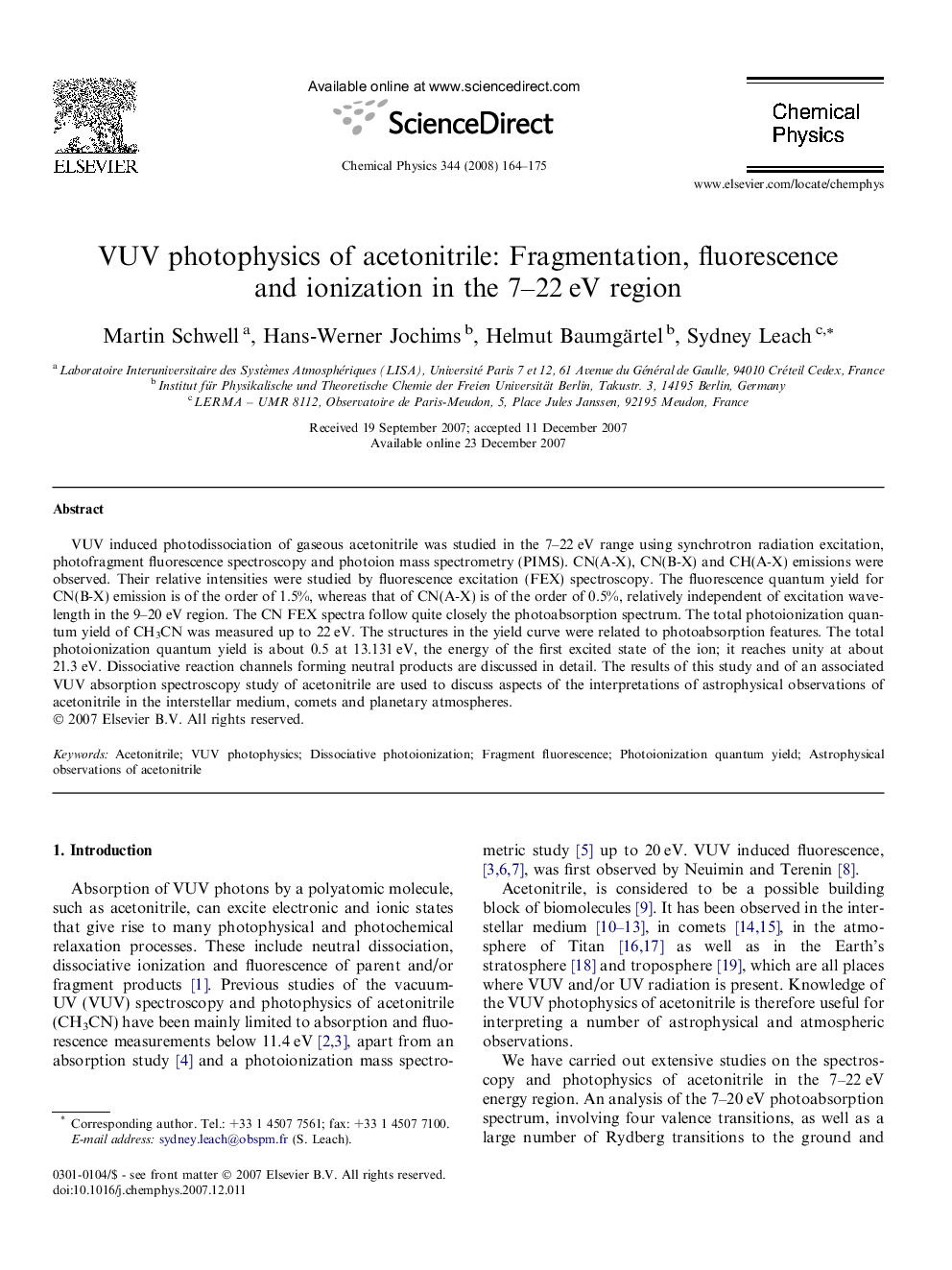| Article ID | Journal | Published Year | Pages | File Type |
|---|---|---|---|---|
| 5376223 | Chemical Physics | 2008 | 12 Pages |
Abstract
VUV induced photodissociation of gaseous acetonitrile was studied in the 7-22Â eV range using synchrotron radiation excitation, photofragment fluorescence spectroscopy and photoion mass spectrometry (PIMS). CN(A-X), CN(B-X) and CH(A-X) emissions were observed. Their relative intensities were studied by fluorescence excitation (FEX) spectroscopy. The fluorescence quantum yield for CN(B-X) emission is of the order of 1.5%, whereas that of CN(A-X) is of the order of 0.5%, relatively independent of excitation wavelength in the 9-20Â eV region. The CN FEX spectra follow quite closely the photoabsorption spectrum. The total photoionization quantum yield of CH3CN was measured up to 22Â eV. The structures in the yield curve were related to photoabsorption features. The total photoionization quantum yield is about 0.5 at 13.131Â eV, the energy of the first excited state of the ion; it reaches unity at about 21.3Â eV. Dissociative reaction channels forming neutral products are discussed in detail. The results of this study and of an associated VUV absorption spectroscopy study of acetonitrile are used to discuss aspects of the interpretations of astrophysical observations of acetonitrile in the interstellar medium, comets and planetary atmospheres.
Related Topics
Physical Sciences and Engineering
Chemistry
Physical and Theoretical Chemistry
Authors
Martin Schwell, Hans-Werner Jochims, Helmut Baumgärtel, Sydney Leach,
